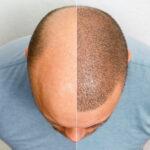
The formation of brown or grayish-brown patches on the face, especially on regions exposed to the sun, is a common skin disorder known as melasma. Although melasma has no health dangers, many people may find it an aesthetic problem. Therefore, you need a thorough strategy to treat melasma, and the length of therapy might vary depending on several variables. How much time melasma treatment is required depends on the treatment type and the nature of the melasma patches.
Understanding Melasma
One frequent skin condition that affects more women than males is melasma. Dark, discolored areas on the skin are a result of the disorder. The pigmentation condition known as melasma mostly affects women, particularly those with darker skin tones. Generally, it establishes black patches and blotches with erratic boundaries on the face. However, melasma is not physically hazardous. However, it makes a person’s appearance different, and it may result in psychological issues and a worse quality of life.
Since hormonal changes brought on by pregnancy, hormonal drugs like birth control pills are important triggers for excessive skin pigment development in melasma. Another significant factor that contributes to melasma is sun exposure.
Is Melasma Preventable?
At the moment, there is no foolproof way to stop melasma. Especially, in those whose genetics, skin tone, hormones, or amount of sun exposure make them susceptible to the disorder, affect more with it. By avoiding the sun between 10 a.m. and 4 p.m., using high-SPF sunscreen thoroughly can save one. Similarly, avoiding hormone medicines as much as possible may prevent flare-ups and lessen the likelihood that the condition will return following therapy. The cornerstone of every melasma treatment plan is strict sun protection.
Melasma Treatment & How Much Time Melasma Treatment Required
Your dermatologist may also do in-office treatments to treat melasma. If you want a quick start to therapy, your melasma is moderate to severe, or topical therapies are not working well for you, these are viable possibilities.
- Microdermabrasion
Dermatologists use microdermabrasion to carefully remove the outermost layer of skin. It may brighten a drab complexion, balance out skin tones, and remove scars from acne.
You usually see a physician or esthetician for microdermabrasion since it is a professional skincare technique. You can use it concurrently with other skin treatments, which take around thirty minutes. Although the process is generally painless, many microdermabrasion treatments may be necessary to get the desired results.
- Chemical Peel
Among all chemical peels, light-duty peels are the most superficial. Because there is no downtime, chemical peels are the most common and extensively performed procedures. These are sometimes referred to as “lunchtime peels,” as you can do them in a lunch break and return to work right away, all while keeping your colleagues in the dark.
An alpha or beta hydroxy acid exfoliates the skin during a mild chemical peel treatment. Generally, dermatologists use peels in the area of melasma. In addition, these peels help in seamless exfoliation to remove melasma from the skin. Further, it lightens discolorations of the skin and ultimately vanishes them.
- Laser Therapy
Laser therapy is a dermatological technique that targets and reduces the appearance of melasma using various types of lasers. These include Q-switched lasers, fractional lasers, and picosecond lasers. However, the main objective is to break down extra melanin, which causes discoloration. Laser treatments target melanin and stimulate collagen creation, reducing pigmentation and enhancing skin texture. However, it may take many sessions for full results.
Consult with Dermatologist
Melasma therapy can be effectively managed by consulting dermatologists or skincare specialists. Dermatologists will accurately diagnose underlying causes like hormonal fluctuations, sun exposure, and hereditary factors, ensuring the best treatment plan. They can create customized treatment programs, including topical drugs, chemical peels, laser treatments, and other procedures. However, regular visits allow for monitoring and adjustments to therapy effectiveness. Therefore, seeking medical advice from dermatologists is crucial for successful melasma management.
You can avail of professional services from Enfield Royal Clinic Islamabad for the best and most effective melasma treatment in Islamabad.
Conclusion
Melasma treatment requires patience and consistency, as everyone’s timetable for improvement varies. A customized strategy combining topical medications, expert techniques, and sun protection is necessary. Results may take weeks or months, depending on skin type and severity. Setting realistic goals, maintaining sun protection, following skincare regimens, and seeing dermatologists are crucial. Identifying and resolving underlying causes is also essential. Consulting with skincare experts maximizes long-term success. A balanced approach to melasma treatment involves time, personalized care, and professional advice.







